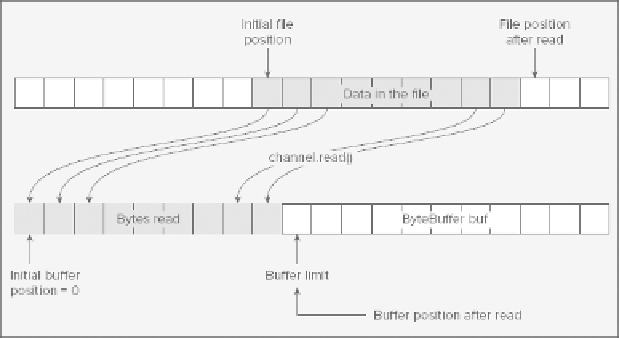Java Reference
In-Depth Information
try (/* ... create channel inCh... */){
// ...
inCh.position(0); // Set file position to first byte
} catch(IOException e) {
e.printStackTrace();
}
This method throws a
ClosedChannelException
if the channel is closed or an
IOException
if some
other error occurs, so you need to put the call in a
try
block. It can also throw an
IllegalArgumentEx-
ception
if the argument you supply to the method is negative.
IllegalArgumentException
is a subclass
of
RuntimeException
. You can legally specify a position beyond the end of the file, but a subsequent read
operation just returns −1, indicating that the end-of-file has been reached.
Calling the
position()
method with no argument returns the current file position. You can use this to
record a file position that you want to return to later in a variable. This version of the method can also throw
exceptions of type
ClosedChannelException
and
IOException
, so you must put the call in a
try
block or
make the calling method declare the exceptions in a
throws
clause.
The amount of data read from a file into a byte buffer is determined by the position and limit for the
buffer when the read operation executes, as
Figure 11-1
illustrates. Bytes are read into the buffer starting at
the byte in the buffer given by its position; assuming sufficient bytes are available from the file, a total of
limit-position
bytes from the file are stored in the buffer.
You'll see some other channel
read()
methods later that you can use to read data from a particular point
in a file.
Reading a Text File
You can now attempt to read the
charData.txt
file that you wrote using the
BufferStateTrace
example
in the previous chapter. You wrote this file as Unicode characters, so you must take this into account when
interpreting the contents of the file. Of course, all files are read as a series of bytes. It's how you interpret
those bytes that determines whether or not you get something that makes sense.

